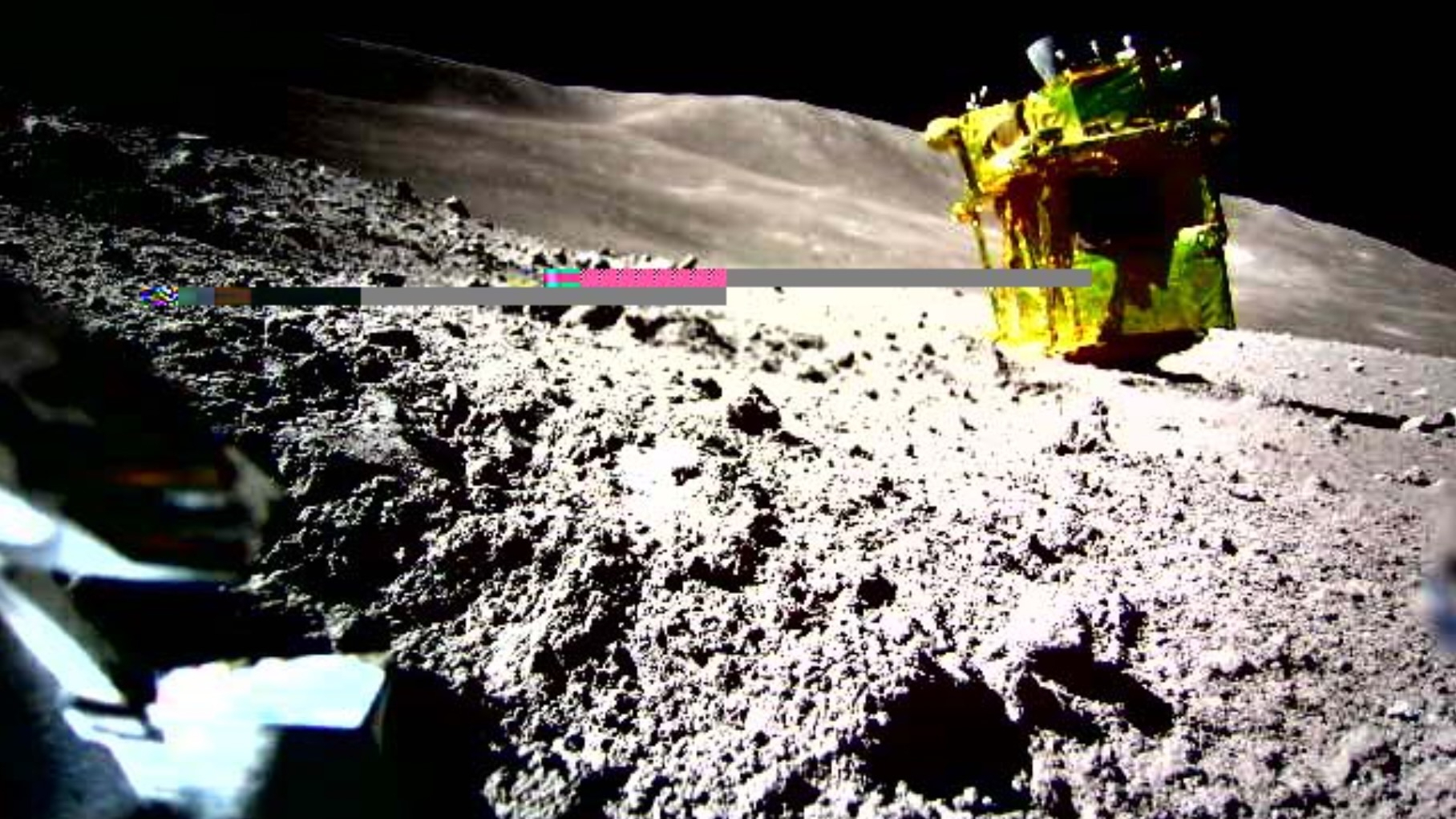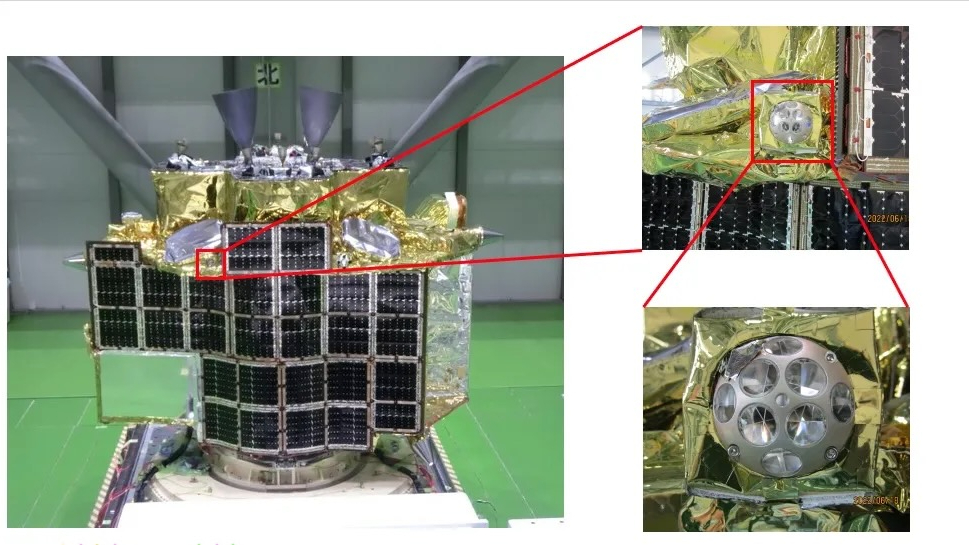NASA moon probe plays laser tag with Japanese lunar lander
LRO pinged India's Vikram moon lander recently as well.

NASA's Lunar Reconnaissance Orbiter (LRO) has been playing a very interesting game of hide-and-seek with Japan's Smart Lander for Investigating Moon (SLIM), which touched down on the lunar surface on Jan. 19.
LRO has been trying to ping SLIM's retroreflector, a dome-shaped, cookie-sized structure that's affixed to the lander's back, just beneath its solar panels. The first eight times LRO fired its laser at SLIM, it failed to hit the retroreflector. But on May 24, during two successive orbits, LRO succeeded: SLIM's retroreflectors had been found.
Retroreflectors are quite simple devices. They're essentially just an array of mirrors, reflecting light back to their source. Hit one with a laser and it will bounce the light back, providing a way to make extremely precise measurements of distance based on the speed of light. And they don't require any power to operate; SLIM likely conked out on the lunar surface several months ago, but its reflector can still bounce laser light back into space.

The problem in this case was, SLIM's landing on the moon wasn't exactly perfect. SLIM landed at the edge of Shioli crater, not too far from its intended location, but that touchdown wasn't as graceful as hoped. Images beamed back from the mission show that SLIM landed face-down, the tip of its nose planted in the gray soil.
Related: NASA's Lunar Retroreflector Network could make landing on the moon much easier
The awkward landing complicated the use of SLIM's solar panels, as they were facing away from the sun (though the mission team troubleshot the issue, keeping SLIM alive through multiple cold, dark lunar nights). It also meant that SLIM's retroreflector was in a difficult-to-ping position. Compounding that problem was the fact that LRO isn't designed to find and ping retroreflectors. Its laser device, an altimeter, was built to uncover topographical details about the lunar surface, providing a map of the moon's craters and plains.
"LRO’s altimeter wasn’t built for this type of application, so the chances of pinpointing a tiny retroreflector on the moon’s surface are already low," said Xiaoli Sun, an engineer at NASA's Goddard Space Flight Center in Maryland, in a press release. Sun is currently leading a team developing and deploying small retroreflectors on the moon for lunar exploration.
Get the Space.com Newsletter
Breaking space news, the latest updates on rocket launches, skywatching events and more!
But LRO's ability to ping a retroreflector was recently proven out. The Indian Space Research Organisation's Vikram lander, which touched down on the moon in August 2023 on the Chandrayaan 3 mission, also contained a NASA retroreflector. In December 2023, NASA scientists attempted to ping a retroreflector from lunar orbit for the first time.
From a height of 62 miles (100 kilometers), LRO directed laser pulses at the Vikram landing site and registered a response. The same technique was used to contact SLIM, though the orbiter was only 44 miles (71 km) above the lunar surface at the time.
The key design feature of the small retroreflectors are their eight quartz-corner-cube prisms. These provide the ability to receive a laser signal and send it directly back to the source. NASA suggests that these devices could one day aid exploration of the moon, perhaps helping the agency's Artemis missions land precisely on the lunar surface.
Lunar laser experiments are not limited to LRO, however. For instance, the Apache Point Observatory Lunar Laser-ranging Operation (APOLLO) in New Mexico sends laser pulses toward the suitcase-sized retroreflectors left by the Apollo moon missions. Such work can determine the distance between the moon and Earth to within a few millimeters — remarkable precision that has enabled scientists to demonstrate that the moon is moving away from Earth by about 1.5 inches (3.8 centimeters) every year.
Join our Space Forums to keep talking space on the latest missions, night sky and more! And if you have a news tip, correction or comment, let us know at: community@space.com.

Jackson Ryan is a science journalist hailing from Adelaide, Australia, with a focus on longform and narrative non-fiction work. He currently serves as the President of the Science Journalists Association of Australia. Between 2018 and 2023, he was the science editor at CNET. In 2022, he won the Eureka Prize for Science Journalism, which Aussies dub the "Science Oscars." Before all that, he got his doctorate in molecular biology and once hosted a kids TV show on the Disney Channel, called "GameFest." (Good luck finding it.) He lives with a collection of more than 70 Christmas sweaters and zero pets, the latter of which he hopes to rectify one day.









